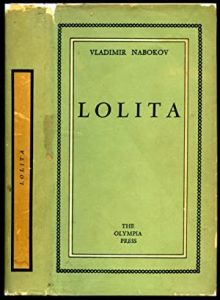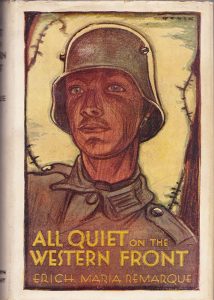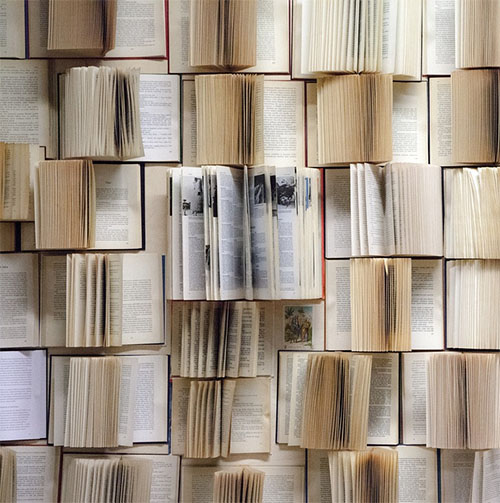Find Rare & Valuable Books and Compare Prices
Why buy rare and collectible books online?
Rare and out-of-print books may not be carried at traditional, brick and mortar bookstores in your area, or their custom-ordering fee may be too high.
Using the internet allows one to find the best price and book condition when considering the purchase of a rare book, or at least a bid. This has the added benefit of browsing at leisure, without pressure.
Find the best condition collectible books at the best price
Our Used Book Search is a great way to find rare and/or valuable books online. It is an easy-to-use comparison tool, that will enable you to see which book marketplaces have your book in stock, and at what price, all in one place.
We hope that we can help you find that allusive, soon to be treasured unique and rare book!
Guide to finding valuable books

The rarest books are pursued with the passion of a collector, or the book lover who wants to personalize a memory. There is a certain status in owning a first-edition of a classic like Charles Dickens‘ A Tale Of Two Cities from 1859. Or the book may be treasured because the author has signed a copy and made personal notes in the cover.
It may be that the value of a book relates to the historical period when it was written. It may be that renewed interest in the Russian Revolution of 1917 may make books from that time collectible, or in some instances only a few copies of a book exist and so the books are valuable because they are scarce. Other books are rare and highly-prized simply because of their age.
In the world of collecting books, antique books can go back to the beginning. Johannes Gutenberg developed the moveable-type printing of books in the 1440’s with the popularized copies of the Bible. A Gutenberg Bible printed in 1456, for example, would be extremely valuable and only offered at the most prestigious, in-person auction.
For some of us, however, we may be on the hunt for a rare book that is important only to us or to a family member. Our Grandmother may fondly remember a children’s picture book that she had growing up. The book may be out-of-print but it may be worthwhile to buy it as a thoughtful gift.
There is a difference then, between sentimental value and monetary value. Let’s now look at the specifics of what makes a book valuable in the capitalist sense of the term:
What makes a book valuable?
Demand outstripping supply
Although you may think of books with nostalgia or sentimentality, the truth is that, just like with other commodities, a book is at the mercy of market forces.
This means that, a book is valuable only if it is in high demand, and if the demand is higher than the supply.
Firstly, let’s look at the supply side –

What factors reduce the supply/make a book scarce?
Limited number of books printed
Sometimes it is a simple case that, especially with the first edition of a book, only a small number of books were printed.
In other cases, a publisher will do a limited print run of certain books, especially for special editions, commemorative copies, or niche publications. Publishers can create limited editions to reduce supply of a unique book and therefore intentionally create desirability.
Once these limited copies are sold out, the book may become scarce on the market.

Age and Deterioration
As books age, they may deteriorate or be discarded, which means that over time, the number of surviving copies decreases, making the book scarcer.
It is important to note that age can affect scarcity, but age alone isn’t a critical factor. Old books printed in huge quantities are worth very little.
Events that make a book rare or scarce
Aside from the limited number of copies of a book originally in circulation, or the effect of age on taking books out of the market, there are events that can occur to make a book scarce.
Here are some examples of events that may have contributed to a book becoming rare:
Censorship/banned books
Some books have faced censorship throughout history, leading to their removal from circulation. Governments or religious authorities may ban or destroy books they consider controversial, offensive, or politically dangerous. Books that have been censored or banned in the past often gain significant value due to their historical significance, rarity, and the curiosity surrounding their content.
Examples of censored books from the past, include:
"Ulysses" by James Joyce
When “Ulysses” was first published in 1922, it faced extensive censorship in several countries due to its perceived explicit content and obscenity.
Today, early editions of “Ulysses,” especially those that survived censorship attempts, are highly sought after by collectors.


"Lady Chatterley's Lover" by D.H. Lawrence
This novel, published in 1928, also faced censorship and was banned in various countries, including the United States and the United Kingdom, for its explicit sexual content.
The ban was not lifted in the UK until 1960. First editions of the book and early unexpurgated editions are considered valuable collectibles.
"Lolita" by Vladimir Nabokov
“Lolita” was published in 1955 and faced controversy and censorship due to its controversial subject matter, which revolves around a relationship between an adult man and an underage girl.
Despite the controversy, the novel gained critical acclaim and has become a classic of modern literature. Early editions of “Lolita,”

The affect of War & Conflict on Book Scarcity
During times of war or conflict, libraries, publishing houses, and bookstores can be targeted or destroyed, causing the loss of books. Additionally, the displacement of people can lead to the scattering of books and the disruption of publishing and distribution, making certain books harder to find.
Here are some examples of rare books that are scarce, partly because of the events of war:

"Anne Frank: The Diary of a Young Girl"
Anne Frank’s diary, documenting her life in hiding during the Nazi occupation of the Netherlands, is a poignant and important historical record. During World War II, Anne and her family were in hiding from the Nazis, and the diary was eventually published after her death in a concentration camp.
First editions of the diary, especially early translations and copies with original dust jackets, are considered valuable and highly sought after.
Doctor Zhivago" by Boris Pasternak
Published in 1957, this novel depicts life in Russia during the tumultuous years of the Russian Revolution and the subsequent civil war. Due to its anti-Soviet themes, the book was banned in the Soviet Union and faced suppression during the Cold War.
First editions of “Doctor Zhivago” from the period of its original publication and early unauthorized editions are valuable collectibles.


"All Quiet on the Western Front" by Erich Maria Remarque
This anti-war novel, first published in 1928, portrays the harsh realities of World War I. During World War II, the Nazis banned and burned the book in Germany, leading to its scarcity during that period.
First editions and early translations of “All Quiet on the Western Front” from the pre-war and wartime era are sought after by collectors.
The affect of Authorial Disavowal or Recalls on Book Scarcity
In some cases, an author might disavow their own work or recall copies of a book from circulation. This could happen if the author changes their views or beliefs, or if they decide the content is no longer representative of their current work. As a result, the availability of the book may be limited, increasing its scarcity.
Here are some examples of valuable books that gained value due to authorial disavowal or recalls:
"The Pale King" by David Foster Wallace
“The Pale King” is a posthumously published novel by David Foster Wallace. The author, known for his seminal work “Infinite Jest,” committed suicide in 2008, leaving “The Pale King” unfinished.
The book was published in 2011, and some editions contain a note by Wallace’s editor, revealing that the author did not want to publish it as it was. This adds to the book’s value among collectors and fans of Wallace’s work.


"J.D. Salinger's Unpublished Works"
After the immense success of “The Catcher in the Rye,” J.D. Salinger became increasingly reclusive and avoided public attention. He continued to write but chose not to publish his later works.
There are rumors of several unpublished works by Salinger, including novels and short stories, which are highly sought after by collectors. Salinger’s estate has maintained strict control over his unpublished writings, further increasing their value.
"Six Crises" by Richard Nixon
Before becoming the 37th President of the United States, Richard Nixon published a book titled “Six Crises” in 1962. After his political career took a dramatic turn due to the Watergate scandal, the book went out of print.
Nixon disavowed some of the content, particularly related to his political and personal actions during the Watergate crisis. As a result, early editions of “Six Crises” became valuable collector’s items.

Remember that the scarcity of a famous book can also be influenced by a combination of these factors. And, as time goes on, the availability of certain books can change dramatically, turning what was once common into something rare and highly sought after.
As we have already said, a book may be rare or scarce, but it also needs to have high demand. Let’s now look at what features can make a book appealing and therefore valuable to collectors:
What increases the demand for a book?
Cultural, Social, Political or Historical Significance
Cultural Significance
Books that capture the essence of a particular culture, its values, traditions, and societal norms, often become culturally significant
Example: “The Tale of Genji” by Murasaki Shikibu is a classic work of Japanese literature from the 11th century, considered one of the world’s earliest novels. It provides a deep insight into the Heian period’s courtly culture and remains culturally significant in Japan to this day.

Social Significance
Books that address social issues, advocate for change, or challenge societal norms can attain social significance. Such books often stimulate discussions and debates on important topics, making them highly relevant across generations.
Example: “Uncle Tom’s Cabin” by Harriet Beecher Stowe, published in 1852, is a novel that exposed the harsh realities of slavery in the United States. The book had a significant impact on the abolitionist movement, and its influence is credited with helping to shape public opinion against slavery.
Political Significance
Books that comment on political systems, criticize governments, or present alternative political ideologies can gain political significance. These books often shape political discourse and influence the thinking of leaders and citizens alike. Political significance can lead to censorship or even bans in certain regions.
Example: “The Communist Manifesto” by Karl Marx and Friedrich Engels, published in 1848, is a foundational text of Marxism and communism. It has had a profound impact on political thought and has been influential in shaping various socialist and communist movements worldwide.
Historical Significance
Books that are directly related to historical events, periods, or individuals can gain historical significance. They provide valuable primary sources and insights into past times, making them essential for historians and researchers.
Example: “On the Origin of Species” by Charles Darwin: Published in 1859, “On the Origin of Species” is one of the most influential scientific works in history. In this book, Charles Darwin introduced his theory of evolution by natural selection, which revolutionized the understanding of biology and the development of life on Earth.
Darwin’s groundbreaking ideas challenged religious and scientific beliefs of the time, sparking intense debates and controversies.

Books by Successful authors
Successful authors can significantly contribute to making a book more valuable due to their reputation, popularity, and the demand for their works. An author with a well-established and respected reputation can significantly increase the value of their books. If an author has consistently produced critically acclaimed and commercially successful works, their name becomes a powerful brand that can attract collectors and readers alike.
Books that have achieved bestseller status tend to be more valuable due to their popularity and widespread recognition. A book that has topped bestseller lists or won prestigious literary awards gains a higher demand among readers and collectors.

Factors that can further propel an author and their books:
Film & TV Adaptations: If a book by a famous author is adapted into a successful film or television series, its value can skyrocket.
Award-Winning Books: Books that have received prestigious literary awards or recognition from esteemed institutions gain significant value.
Death of a major author: The passing of an influential author can solidify their legacy and historical significance, and thus the death of a major author can often increase the value of their books, particularly in the rare book market.
Unique or special features of a rare book that can raise demand
True First Editions
Signatures
An author’s signature adds a personal touch and authenticity to the book, making it a direct connection to the creator of the work.
If an author conducted only limited signings, the scarcity of their signatures can increase the value of the signed books. For instance, if an author rarely attended book signings or passed away early in their career, signed copies may be relatively rare.
The placement of the signature can affect the book’s value. A signature on the title page is often preferred, as it is a prominent and traditional location. Signatures on important pages or within illustrations can also add value.
Books with a certificate of authenticity or those authenticated by reputable experts hold more value. Authenticating the signature provides assurance to collectors that the signature is genuine.

Dust Covers/Jackets
Many collectors consider a book to be incomplete without its original dust jacket. As such, books with intact, original dust jackets are often more valuable than those without. Furthermore, many book collectors appreciate the visual appeal of vintage dust jackets, especially those from specific time periods or with notable cover art.
Dust jackets are more susceptible to wear and damage than the hardcover itself. Consequently, finding books with their original dust jackets in excellent condition can be challenging, increasing their scarcity and value.

Unique Illustrations
Unique illustrations make a particular copy of the book one-of-a-kind, adding to its exclusivity and rarity. Collectors appreciate owning something distinct and exceptional, which can drive up the book’s value.
Plus, original illustrations add artistic value to the book, making it visually appealing and aesthetically significant. The quality and beauty of the artwork can significantly impact the book’s desirability.
Association Copies
Condition
Most definitely not to be dismissed, as the final point. The condition of a book is crucial when determining its value.
Collectors, who are often willing to pay a premium for rare and valuable books, seek items that are in the best possible condition. Books in excellent condition are more likely to appreciate in value over time, making them sounder investment choices.
Not only this but collectors take pride in owning books in the best possible condition. The pursuit of rare books in excellent condition contributes to the satisfaction of building a quality collection.
This includes the presence and condition of a dust jacket, and the condition of any extra features, such as notes, signatures, or extra illustrations.
Detailed photographs and multiple paragraphs of text can be reassuring when buying a collectible book without seeing it first. The more research you can do on a book, the more confident you can feel that you understand the details on a used book’s condition and therefore its value.
For more about assessing the condition of a used book, when purchasing online, please see our used book conditions guide here
